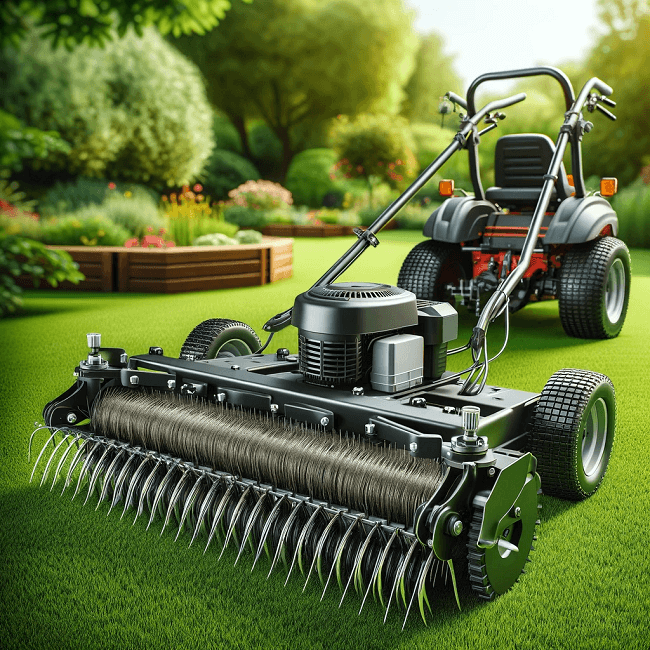Certainly! Here’s a more detailed guide on using a pull-behind dethatcher with headings for easy reference:
Introduction to Pull-Behind Dethatchers
Table of Contents
A pull-behind dethatcher is a valuable tool for lawn care that helps remove thatch, a layer of dead grass, roots, and organic matter that can accumulate on your lawn’s surface. Proper dethatching promotes healthy grass growth by allowing water, nutrients, and air to reach the grass roots.
Choosing the Right Time
Timing is crucial when dethatching your lawn. It is best done in the spring or fall when the grass is actively growing. Avoid dethatching during the hot summer months or when the grass is dormant.
Equipment Preparation
Before you start dethatching, ensure you have the following equipment ready:
- Pull-behind dethatcher
- Lawn tractor, riding mower, or ATV to tow the dethatcher
- Rake or lawn sweeper for collecting thatch
- Safety gear, including gloves and eye protection
Adjusting Dethatcher Depth
Most pull-behind dethatchers allow you to adjust the depth of the tines or blades. Setting the correct depth is essential to avoid damaging the grass roots. Start with a shallow setting and gradually increase the depth if necessary.
Dethatching Process
Follow these steps for effective dethatching:
- Attach the dethatcher to your towing vehicle following the manufacturer’s instructions.
- Begin by making overlapping passes across your lawn. This ensures even coverage and prevents missed areas.
- Watch the dethatcher in action. The tines or blades will penetrate the thatch layer and pull it up to the surface.
- Keep your speed consistent and avoid sudden turns or stops to prevent damage.
Collecting and Removing Thatch
After dethatching, the loosened thatch will be on the surface of your lawn. Use a rake or a lawn sweeper to collect the thatch and debris. This can be physically demanding, so be prepared for some manual labor.
Follow-Up Lawn Care
Dethatching is often just one step in revitalizing your lawn. Consider the following post-dethatching activities:
- Overseeding: To encourage new grass growth in areas where thatch was removed.
- Fertilizing: Provide nutrients to your lawn to promote healthy growth.
- Watering: Keep the soil consistently moist to aid in recovery.
Maintaining Your Dethatcher
Proper maintenance ensures your dethatcher continues to perform well. After each use, clean the dethatcher to remove any debris and grass clippings. Regularly inspect the blades or tines for wear and replace them as needed.
Conclusion
A pull-behind dethatcher is a valuable tool for lawn maintenance, helping you keep your grass healthy and vibrant. By following these steps and guidelines, you can effectively dethatch your lawn and enjoy a lush, green yard.

